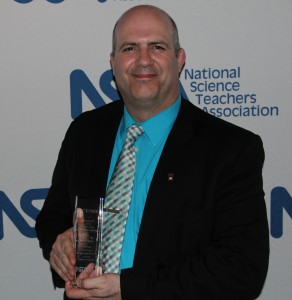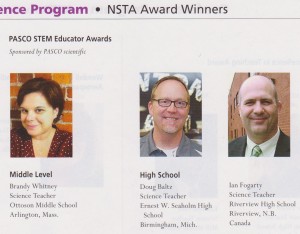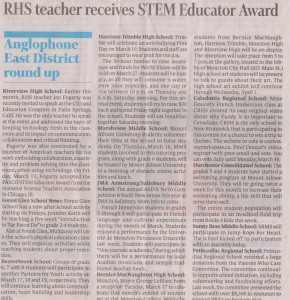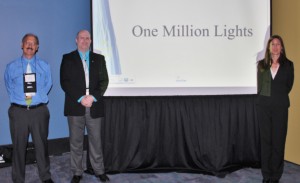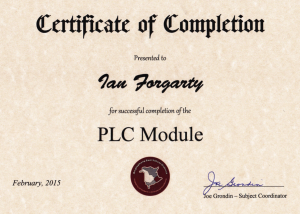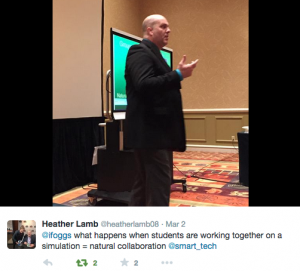Please join me in welcoming Award Winning teacher, Ian Fogarty to the MindShare Learning Advisory Board team. Ian is a master high school science teacher in N.B., who recently won an international science teaching award in the U.S. He is a highly sought after presenter and a past MindShare Learning Video Challenge Winner.
Author Archives: admin
Break Thru’15 in Freddy
A Breakthru @ #Breakthru’15
Thank you to Brilliant Labs and the Department of Education for inviting my students and I to the NBIF Breakthru Event Last night. My students were excited and empowered by the recognition and learned some of the nuances of networking.
Our Premier, the Minister of Education, The Deputy Minister of Education Francophone and the Leader of the Opposition were all able to catch glimpses of what Education could be and the wonderful work that today’s students and teachers are doing.
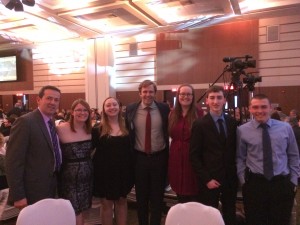
My students have been working on three main projects this semester, all of which require taking school outside of school and solving real problems for real people and where the lines of courses and content are blurred.
- The One Million Lights is trying to provide 3D printed personal sources of light to students who cannot study after sunset.
- The Automated Aquaponics Greenhouse is trying to create a low maintenance, smart greenhouse that will provide seedlings for the short growing season in the community garden.
- Cyborg Arm is taking the popular 3D printed passive prosthetic a major step forward by automating it with EKG sensors attached to muscles, Arduinos and servos.
Brilliant Labs has supported each of these projects and helped give recognition to the innovation that can happen in a school. As a result, we were invited to the BreakThru event, which was the culmination of a contest that encouraged start ups and helped them along the way. It was a high profile event with all the major business players in the province from the Premier, to Ministers, to banks, accountants, Planet Hatch, Mr. Pond and Mr Deshpande, and the president of Shad.
I gave my students an assignment, “To learn how to network at a reception”. Natural human tendency is to find a group of familiar people and spend all your time with them, which will only slightly strengthen your already well established relationship. The purpose of this is to go meet strangers, give them a short sentence on what you do and ask them about what they do. I pointed out people I knew from Planet Hatch, NBIF, Shad, the UNB TME Center, Anywhere Group, Wicked Ideas etc… I left them in a room of 400 high profile business people. They decided to go talk to Mr. Pond and Mr Deshpande.
After the awards banquet, Mr Pond bypassed a number of important people to tell me how well my students did speaking with him and his business partner. Clearly they were smart, but perhaps more importantly, they were confident. His comment was that average but confident people can do amazing things. As Mr Pond was speaking, I was thinking that Scott Nielsen (Preston Middle School) would be proud, “Students moving with competence and confidence”.
When they got to the table, I told them to sit with at least 2 chairs between them so that a single or a couple could sit between them. I think that they had fun being intermixed with other students. They were close enough to have cross table conversations, but spent most of their time talking to previous strangers. Well done.
I wonder what Staff morale at my school would be if teachers cognisantly and deliberately did something similar?
The Premier and Minister of Ed had their pictures taken with students. The students giggled with joy when the Premier retested a few minutes later. Little did they know that the Premier was about to single them out. See the video. The students were empowered and excited. What a great experience.
NSTA PASCO STEM Educator Award
One Million Lights at NSTA and Around the World
One Million Lights and www.philanthropic-engineering.org is getting lots of attention. BETT’15, INTED’15, CIO Congress’15, Education Congress’15 and now NSTA’15.
There are three things in this blog. #1. The idea of One Million Lights and Philanthropic-engineering seems to be getting international traction. #2. Collaboration is much harder than Cooperation, but gives such a better final product AND is a great growing experience. #3. Maybe 1 Million Lights will be distributed, changing both the students who receive them, and the students who make them. #4. People want cookie cutter.
#1. “What School could be” gaining International Traction:
Educators around the world know that school seems to be broken. There is lots of theory and vision of what they would like school to be, but have few clear practical examples. One Million Lights seems to be one emerging example. International students from Y4 UK, to US Middle School to Canadian High School, working truly collaboratively, where there are multiple iterations and minds are changed in the process. STEM topics are blended with CAD, world issues, geography, and literacy. Perhaps this could hint towards what school should and could be? www.philanthropic-engineering.org
#2.Challenging but better, Collaboration vs Cooperation:
My Colorado friends, Tracey and John, spoke about One Million Lights at INTED’15 in Madrid while simultaneously, I spoke about the same thing at CIO Congress and Education Congress in Palm Springs.
Now we need to present the same work together. It would have been much easier just to say that one group does their part while the other group does the other part and paste them together. It started out a synchronously with Tracey doing the lion’s share. I was able to add some slides and change some content. This was great COOPERATION. However, to work collaboratively, we needed to work on the same slides.
So, the day before, we spent all afternoon with the three of us going over slide by slide. Matching three different styles together with a deadline was fun, but could have been frustrating had we not gelled so well. There was moving, moving back, trying this and trying that. In the end we had something that worked well.
On the day of the presentation, we still had not practiced it the whole way though. We assigned various slides to various speakers, discussed the content, but did not actually practice.
There we were on stage. We had 1hr. We took 54 min. There were a couple of times that I did not quite finish correctly, and the other would step in, say what I missed and use it as a transition to the next slide. It worked so well, it was like it was practiced, but it was not.
Not only did we have more perspectives represented in the talk, but we would never had been able to cover for each other and move fluidly had we only cooperated. Thank goodness we collaborated.
One Million Lights’ goal of One Million Lights distributed around the world may be possible.
During the previous day, in the same room at a similar time, there was 1-4 people in the audience. For us, we had 38 people, a virtual crowd given the location and timing.
The audience was engaged, nodding in agreement, positive body language and lots of questions afterwards. We had 6 people come up afterwards and have some deeper conversations. The invitation was well received. I think we will get some people on board.
We better be ready for it.
#4 Cookie Cutter Programs
We are surrounded by 1001 programs, curriculums and guides that offer step by step instructions. It was ironic how one of the teacher questions compared to one of Tracey’s stories during the presentation.
We created this with the idea that students should be involved with thinking and doing and creating. Tracey gave the example of how grit, perseverance and thinking were products of PRODUCTIVE FRUSTRATION. When a student did not know where to solder the next LED, the student wanted the teacher to say, “good job, now do the next one there”. This is how the student had been trained over 7 years of school. The teacher had to resist celebrating and then telling. Had the teacher told them what to do, the product (the light) would have been done faster and more efficient, but the student would not have learned to think, to try, to demonstrate grit. There was an audible sigh of agreement from the crowd when this was discussed.
At the end of the talk, one of the questions asked if there were published lesson plans, curriculum guides and rubrics. The irony between what we were trying to teach the students and what the teacher was asking made me feel like re-writing a verse to an Alanis Morisette song. We want teachers and students to have a personal connection to the work. We want teachers to model the same creativity, diversity and grit that we expect from our students. Even the teachers have been programmed to be little robots.
Ideally, all teachers would pick this program up and run with it, like Preston, RHS and Pheasey. However, the reality is that not all are risk takers. In fact, I suspect the risk takers are already doing their own cool thing. In order to move teachers and students towards a favorable side of the spectrum, we may need to provide help. How much is the right amount of help so that people will be encouraged to participate, but maintain the critical thinking, creativity and ownership?
RHS, Preston and One Million Lights at INTED’15 in Madrid
INTED’15 in Madrid is an international research conference on education. John Howe and Tracey Winey presented the collaboration between Preston and RHS on the One Million Lights project.
RHS, Pheasey and One Million Lights at BETT’15
For the third year in a row, RHS was featured at BETT’15. Gareth and David expounded upon the One Million Lights Collaboration.
Collaboration is a word that many people misuse. Other words that more accurately describe what they mean are “Contributions” or “Cooperation”. Contribution is when more than one person add their work together, like authors contributing chapters to a book. Cooperation is when we work on the same larger project, but one person is responsible for one aspect while the other person takes care of a different aspect. A plumber and electrician cooperate to build a single house. Collaboration implies a more intimate work of the content, where there are multiple iterations, there is consensus and minds are changed.
Most people really should be using the words Contribution or Cooperation.
PLC …Another Principal’s Module Done
CIO and Ed Congress in Palm Springs
I was asked to speak at CIO and Ed Congress about keeping technology Fresh and Natural for Students and Teachers in the Classroom.
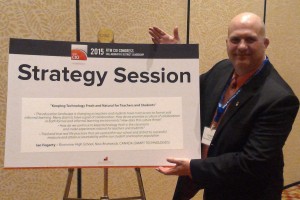 They were good. There were some interesting questions afterwards. They clapped, said some good things and went on their way. However, there were a couple of interactions that confirm that my message is ringing a bell.
They were good. There were some interesting questions afterwards. They clapped, said some good things and went on their way. However, there were a couple of interactions that confirm that my message is ringing a bell.
One CIO was trying to slow down the mass adoption of tablets in their district. There is an administrator at the district level who is “gung ho” to implement the tech. The CIO is concerned, not form a financial point of view, or from and infrastructure point of view. The CIO is worried that the tech will collect dust because there does not seem to be a good rational as to why the tech or how high will the tech reach on the SAMR model.
At this point the conversation had nothing to do with SMARTBoards. It was much more about one of my slides that talked about the importance of asking the right questions. It is less important to worry about how to get the tech and much more important to know what you want students to be doing and then find the right tech. He worries that his district has not asked the right question.
I had another conversation about the videos from my classrooms. I changed his mind about what collaboration really looks like. It is like being part of a baseball league. You think you know how to play ball, then you move up to the PRO’s and realize how much you did not know. He thought he understood things about collaboration with tablets and 1:1 devices. But when he saw the video of students working the light simulation, he realized the power of a large format digital interactive surface to help students reach a higher level of collaboration.
My third conversation of five, was with a principal. It was the most intruiging. He talked about how I was the only teacher-presenter and how it made all the difference. I was not selling a product, I was trying to sell an educational philosophy and practice. The right tech will be around for the right tool for the right learning activity. The tech will speak for itself.
He was building a new school and had given up on SMARTBoards. He did not use these words, but it was the right sentiment. They seem to be TPR’s..traditional Pedagogy Replicators- expensive chalkboards that do not change pedagogy. He was working to secure a large purchase of tablets expecting to increase collaboration. But their vision of collaboration seems to be more like contribution or cooperation where individuals work on separate parts and then paste them together. Each piece of the puzzle does not need to know much about the other piece. This is contrasted by collaboration where students work on the same piece at the same time in an iterative process where minds are changed and consensus is built. NOW he wants to stall his order and seriously consider SMARTBoards over tablets. He also recognized the importance of PD to show this new vision of what collaboration means. This is the second time in 2 years at this same conference that a large tablet order was cancelled and SMARTBOards reconsidered as a way of collaboration.
This administrator was particularly impressed with the middle part of my talk. The first was philosophy and the last was tips. The philosophy was nothing he hadn’t heard before. However, a sentence that I said about the practice having integrity with the philosophy was sometime missing. The middle section talked about how the philosophy matches the practice for tasks that are common place, but altered enough to make significant difference. It seemed like a reasonable but powerful step forward. I am glad I did not delete that piece in exchange for the more fun, but further from their reality section of “Inspired Collaboration”. The middle part about the research, the literacy and the inspired AMP -One Million Lights project was a powerful combination. Here is the data, here is a reasonable step that anyone from any subject area can grasp and implement and finally, there is a high level vision to grow into.
That night at supper, Sir Ken Robinson spoke. He has done some great work creating a new vision and identifying the problems. He has been criticized for having few solutions. As he says, he had 18 min, give him a break!! The last two times I heard him speak, they were similar talks. His new book was a new edition of his old book. I thought they were powerful. But this time, his new book seems to be examples of how to implement some of the things he is speaking about. It seems more practical and grounded. The whole time he is talking, I am thinking, Science 12 does that, science 12 does that too. And her we do that three!! I wonder if Science 12 should have been in his book.
It is easy for me to think that I am doing good things, but it is hard to know what others really think. They clap at the end of talks and say good things, but that is just them being polite. However, I thin it says something important, encouraging and validating when people seek you out, miss meetings and talk about specific parts of the talk.
Maybe there is something here more than I know.
Coincidences
It was a Thursday evening. The Deadline for INTED paper is up in a few hours. John has generously offered to fly me to Madrid. I am all excited, but feeling badly about being a “mouch”. I get 3 emails within 10 minutes.
One is from John and Tracey inviting me to help edit the documents and beginning to write the second document.
The second one is telling me that my funding is not going to go through.
The third one is from SMART asking me to speak at a combined conference, CIO Congress and Education Congress. These will be the top Chief Information Officers and then the top Superintendents from the US.
It is funny how coincidences happen. On one hand, it is an opportunity to reach a larger audience and I am having a hard time to find the resources to go to Madrid. On the other hand, I feel like I am letting John and Tracey down. I am in, then Im out, then I’m in and now I am out.
John and Tracey were most generous, looking at the big picture. This will allow the message of Philio-engineering in general and One Million Lights specifically get to a larger audience. The plan was hatched for me to speak to the North American Audience while John and Tracey speak to a world-wide audience in Madrid.
I really wanted to spend some professional and fun time with John and Tracey in Madrid.
Two talks accepted at INTED ’15
Two talks were accepted to INTED’15 in Madrid. It is a research based audience.
The first talk was about the research I have done around the COLLABORATIVE CLASSROOM. Acceptance_letter_INTED2015_Paper_id_42578
The second talk was a collaborative talk with John Howe and Tracey Winey at Preston Middle School about One Million Lights.

